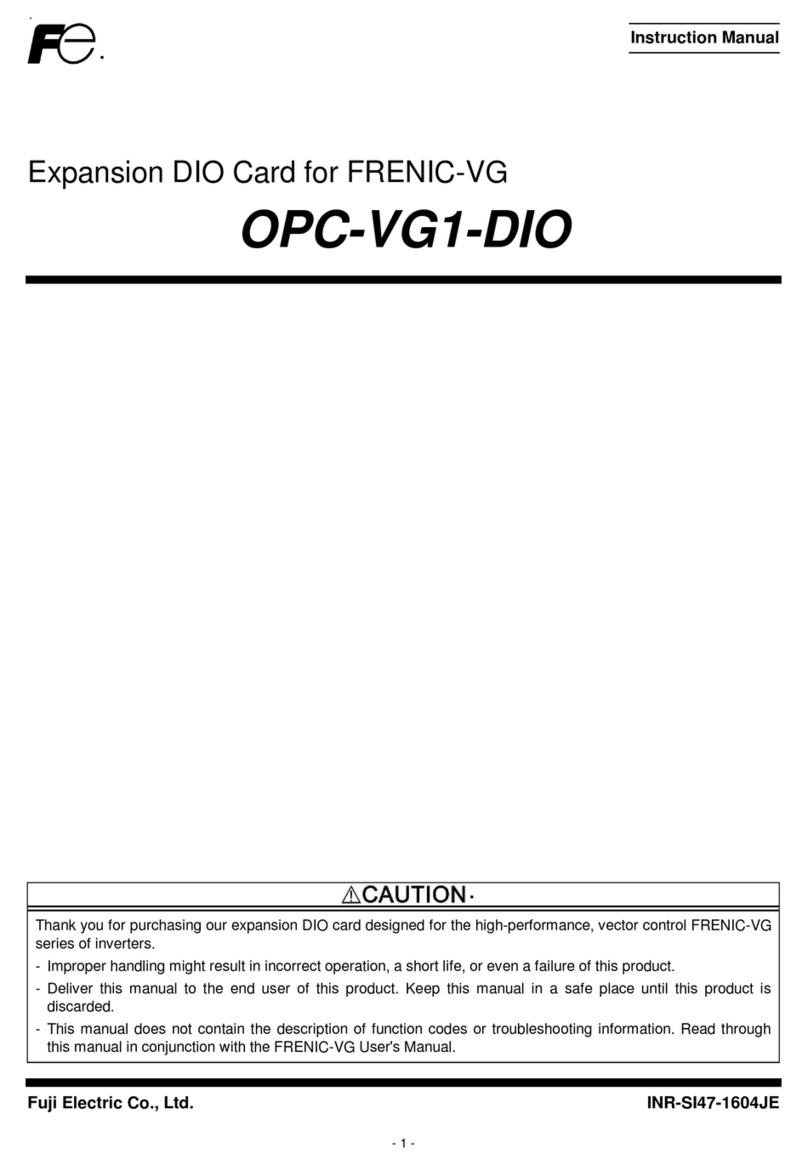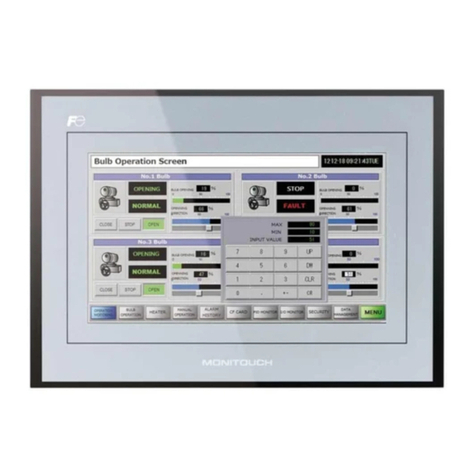
- 7 -
Instruction Manual
PG Interface (5 V Line Driver) Card "OPC-G1-PG22"
Thank you for purchasing this PG interface card containing 5 V line driver card (hereinafter called PG interface card), "OPC-G1-PG22."
Mounting this card on your FRENIC-MEGA enables synchronous operation of two motors using PGs or frequency command entry by
pulse train input.
・Mounting this interface card disables the pulse train input function assigned to the inverter's [X7] terminal.
・The FRENIC-MEGA has three option connection ports--A-, B-, and C-ports. Connect this PG interface card to the C-port.
The A- and B-ports cannot accept this card. Mounting this card occupies also the B-port space so that any option card canno
be connected to the B-port.
1 Check that:
(1) A PG interface card and four screws (M3 ×8) are
contained in the package.
(2) The PG interface card is not damaged during
transportation--no defective devices, dents or warps.
(3) The model name "OPC-G1-PG22" is printed on the PG
interface card. (See Figure 1.1.)
If you suspect the product is not working properly or if you
have any questions about your product, contact the shop where
you bought the product or your local Fuji branch office.
Figure 1.1 Front of Card Figure 1.2 Back of Card
2 Installation
Before starting installation and wiring, turn OFF the power and wait at least five minutes for inverters with a capacity of 22 kW or
below, or at least ten minutes for inverters with 30 kW or above. Make sure that the LED monitor and charging lamp are turned OFF.
Further, make sure, using a multimeter or a similar instrument, that the DC link bus voltage between the terminals P(+) and N(-) has
dropped to the safe level (+25 VDC or below).
Otherwise, electric shock could occur.
(1) Remove the front cover from the inverter and expose the control printed circuit board (control PCB). The PG interface card can be
connected to the C-port (CN6) only. (Figure 2.1)
To remove the front cover, refer to the FRENIC-MEGA Instruction Manual, Section 2.3. For inverters with a capacity of 30 kW or
above, open also the keypad enclosure.
(2) Insert connector CN1 on the back of the PG interface card (Figure 1.2) into the C-port (CN6) on the inverter's control PCB. Then
secure the card with the four screws that come with the card. (Figure 2.3)
Check that the positioning cutout (Figure 1.1) is fitted on the tab (cin Figure 2.2) and connector CN1 is fully inserted
(din Figure 2.3). Figure 2.3 shows the PG interface card correctly mounted. Do not connect the interface card to the
orts other than C-port. Doing so may damage the card.
(3) Perform wiring to the PG interface card.
Refer to Section 3 "Wiring."
(4) Put the front cover back into place.
To put back the front cover, refer to the FRENIC-MEGA Instruction Manual, Section 2.3. For inverters with a capacity of 30 kW or
above, close also the keypad enclosure.
Figure 2.1 Option Connection Ports Figure 2.2 Mounting PG Interface Card Figure 2.3 Mounting Completed
c
Screw holes (right)
J1
CN1
Model name
Positioning cutout
Release knob
Screw holes (left)
SW1
①Fit the positioning cutout of the card over
the tab on the inverter to determine the
mounting position.
②Insert connector CN1 on the card into
the C-port (CN6) on the inverter's
control PCB.
②
CN6
CN5
CN4
C-Port
B-Port
-Port
va
a
e
(B port also
occupied)
Not available
































